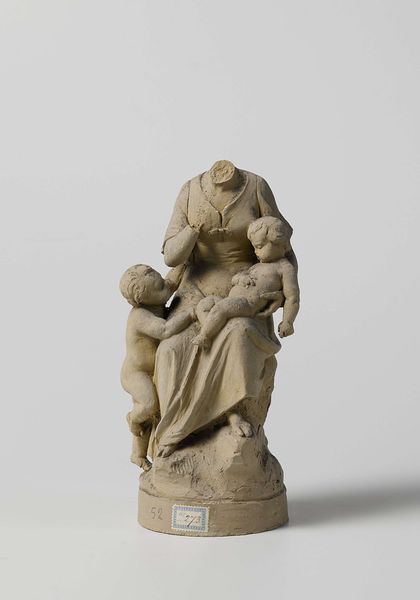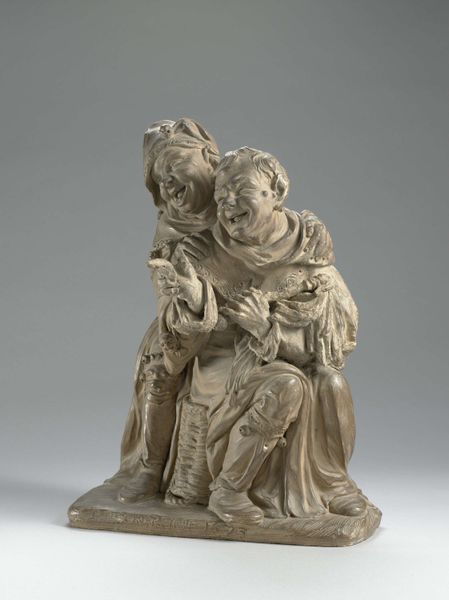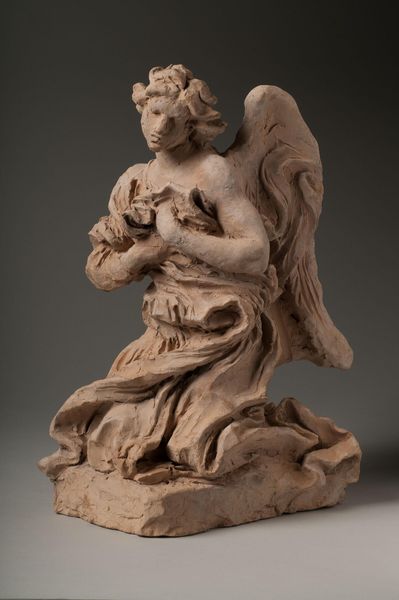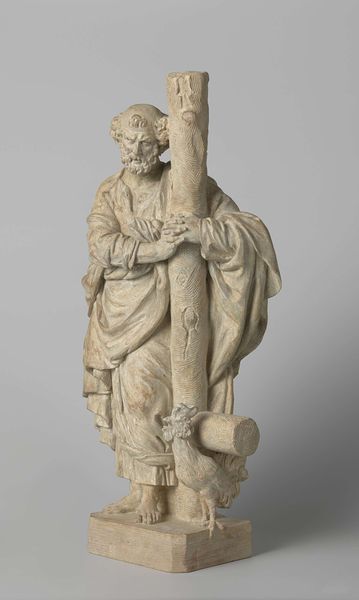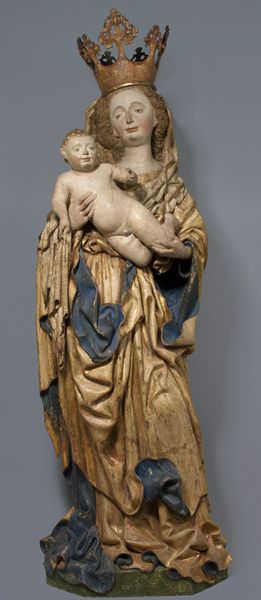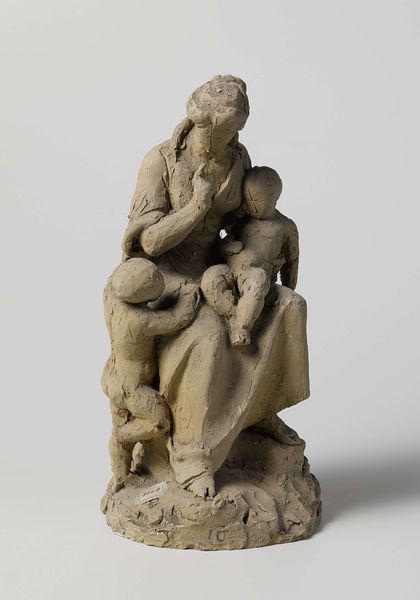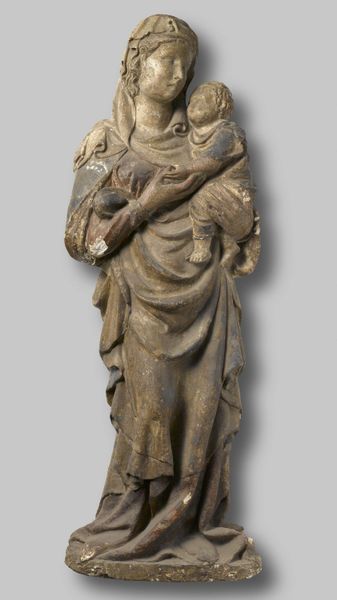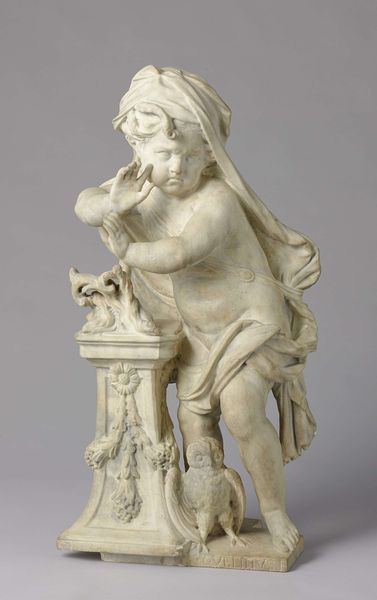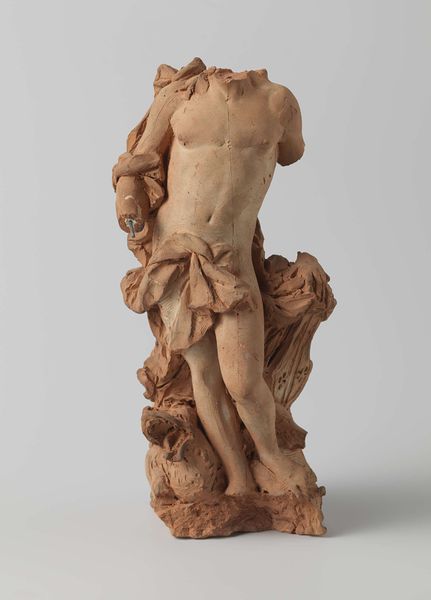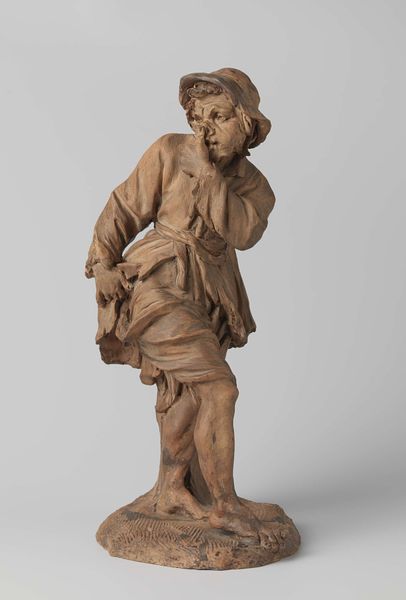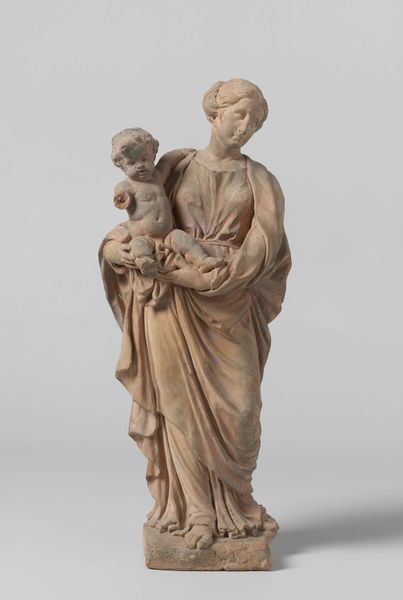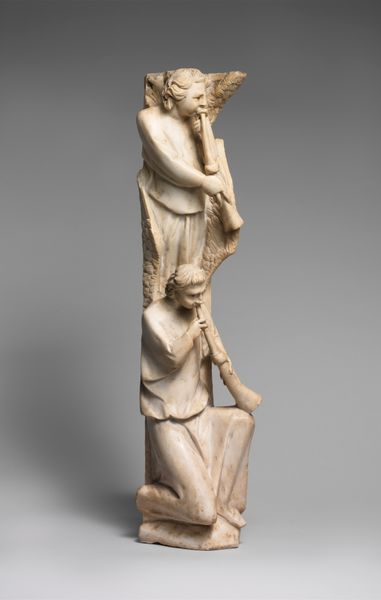
sculpture, wood
#
portrait
#
sculpture
#
mannerism
#
figuration
#
sculpture
#
wood
#
history-painting
Copyright: Rijks Museum: Open Domain
Tommaso Porlezza della Porta modeled The Prophet Balaam in terracotta, a familiar and malleable material used in early modern sculpture. Terracotta, meaning "baked earth" in Italian, has a somewhat paradoxical quality, capable of great detail, yet humble in origin. The artist expertly renders the prophet’s muscular physique and melancholic expression. Note the way the drapery falls, creating deep folds that catch the light. The surface has a tactile quality, retaining traces of the artist’s hand. In the Renaissance workshop, terracotta was often used for preparatory models or studies, allowing artists to experiment with form and composition before embarking on more costly and time-consuming materials like marble or bronze. But it was also prized as a medium in its own right, and by the 16th century, terracotta sculptures were collected and displayed as independent works of art. Considering this history, it challenges our traditional hierarchy that places ‘fine art’ on a higher plane than ‘craft’. Terracotta stands as a testament to the enduring appeal and expressive potential of a common material transformed by a skilled hand.
Comments
rijksmuseum about 2 years ago
⋮
This sculpted modello or bozzetto is a design for a statue of the prophet Balaam intended for the basilica of the pilgrimage site of Loreto in Central Italy. The church was built around the Santa Casa, the house where, according to legend, the Virgin was born. The statuette stands out for its virtuoso modelling, as in the figure’s right arm and hand. It was long thought to be by Michelangelo.
Join the conversation
Join millions of artists and users on Artera today and experience the ultimate creative platform.
